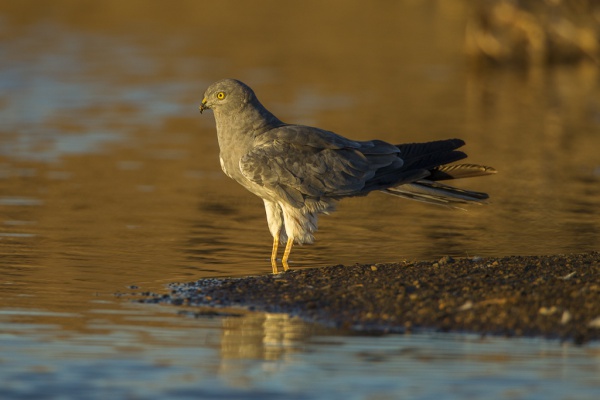Facts About Montagu's harrier
Montagu's harrier is a captivating migratory bird of prey belonging to the harrier family. Named after the British naturalist George Montagu, it was first formally described by Carl Linnaeus in 1758 as Falco pygargus. The genus name, Circus, derives from the Ancient Greek word "kirkos" and the species name pygargus refers to the bird's distinctive white rump.
In terms of identification, males and females exhibit notable sexual dimorphism. Males have pale grey plumage with striking black wingtips, while females have yellow-brown underparts adorned with longitudinal stripes. Juveniles resemble females but lack any spotting. Renowned for their graceful flight, Montagu's harriers possess a wingspan ranging from 97 to 115 cm and a body length of 43 to 47 cm. They fly with elegant wingbeats and maintain a characteristic dihedral wing position.
Montagu's harriers are distributed across temperate, Mediterranean, and boreal zones. They typically nest in lowland areas such as river valleys, plains, and wetlands. Their diet primarily consists of small rodents, birds, reptiles, and insects, which they hunt near the ground with agile movements. During the breeding season, these harriers exhibit social behavior, often forming loose colonies to enhance protection against predators. Males perform sky-dances and acrobatic displays to attract females, who then build nests in tall vegetation.
In the western Palearctic region, the population of Montagu's harrier is estimated to be between 35,000 and 50,000 pairs. Globally, their numbers range from 150,000 to 200,000 individuals. Conservation efforts are crucial as their population is declining due to factors such as agricultural pesticides, intensive farming, and habitat loss. These birds migrate to sub-Saharan Africa or the Indian subcontinent, returning to their breeding grounds in the spring.
Montagu's harrier faces significant conservation challenges, particularly in Western Europe, where approximately 70% of breeding pairs nest in agricultural farmlands. This makes them susceptible to disturbances like early harvesting. Non-governmental organizations and landowners are collaborating to protect these nests, either by relocating them or creating protected areas. Despite these efforts, Montagu's harrier continues to face threats from habitat loss and human activities. Ongoing conservation is essential to ensure the survival of this remarkable bird.

 Germany
Germany